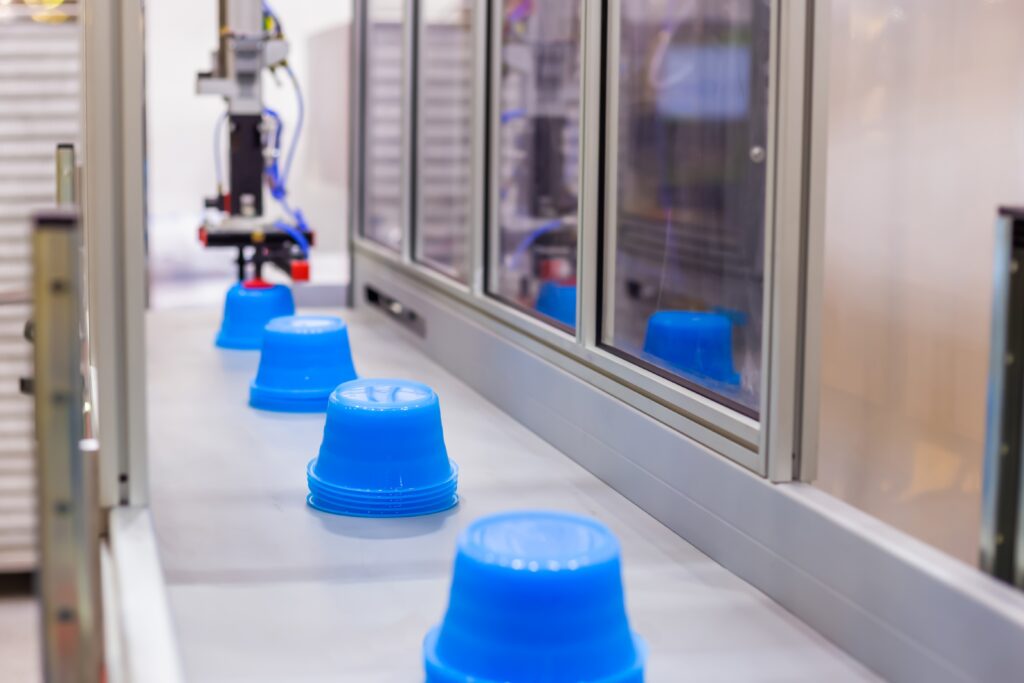Automation can have a tremendous impact on your next custom injection molding project. The integration of automation technologies not only promises to enhance operational efficiencies but also redefine the parameters of quality, cost, and throughput in contract injection molding projects. In the blog below, we’ll dive into how automation is reshaping the landscape of custom injection molding, particular high volume injection molding, providing insights into when it’s warranted, its impacts on various facets of production, and what you might expect to invest in these solutions.
Conditions That Warrant Automation
First, we’ll review the circumstance that warrant the implementation of automation in a contract injection molding project. Automation in custom injection molding is not a one-size-fits-all solution. Several conditions should be met:
–High Volume Production: Projects requiring the production of large quantities of parts are prime candidates for automation, where consistency and speed are paramount. Typically, projects that require more than 500,000 units are defined as high volume injection molding and are candidates for automation.
–Complex Part Geometries: Automated systems can enhance the production of parts with complex geometries, ensuring precision and reducing the risk of human error.
– Repetitive Tasks: Automation excels in environments dominated by repetitive tasks, reducing labor costs and minimizing fatigue-related errors.
– Need for Enhanced Quality Control: For projects demanding high-quality standards, automated systems can offer more consistent and precise quality control measures. Increasingly, robotic systems that incorporate the use of AI are being used to monitor quality in injection molding.
Impacts of Automation on Quality
The introduction of automation into the injection molding process brings a significant uplift in product quality:
–Consistency and Precision: Automated systems ensure that each part is produced with the same specifications, leading to higher consistency and precision. As mentioned above, robotic eyes that incorporate AI technology are increasingly being used to monitor the quality of each part.
–Reduced Human Error: By minimizing the need for manual intervention, the likelihood of errors attributable to human factors is significantly lowered.
–Improved Material Handling: Automation can optimize the handling of materials, reducing contamination risks and enhancing the final product’s integrity.
Impacts of Automation on Cost
While the initial setup cost for automation may be high, the long-term financial benefits can be substantial:
– Lower Labor Costs: Automation reduces the need for manual labor, especially in repetitive and labor-intensive tasks.
– Increased Efficiency: Automated systems can operate 24/7 without breaks, significantly increasing production capacity without proportional increases in labor costs.
– Waste Reduction: Precision and consistency in production lead to less material waste, contributing to cost savings over time.
Impacts of Automation on Throughput
Throughput — the amount of product produced within a given period — sees remarkable improvement with automation:
– Faster Production Times: Automated processes can run at faster rates than manual operations, drastically reducing cycle times.
– Higher Operational Capacity: Automation enables round-the-clock production, effectively increasing the overall output capacity.
– Scalability: Automated systems can be scaled up or down with relative ease, allowing for flexible response to demand fluctuations.
Expected Cost for Automation Solutions
Investing in automation requires careful consideration of the initial setup costs against the expected ROI:
– Initial Investment: The cost of automating an injection molding operation can vary widely, depending on the extent of automation and the specific technologies implemented. This can range from tens of thousands to several hundred thousand dollars.
– Maintenance and Upkeep: While less than the ongoing costs of manual labor, automated systems do require regular maintenance and occasional upgrades.
– Return on Investment (ROI): Despite the upfront costs, the efficiencies and savings gained from automation typically result in a favorable ROI, often within a few years of implementation.
In conclusion, automation presents a compelling proposition for businesses engaged in custom injection molding, offering significant benefits in terms of quality, cost, and throughput. While the initial investment may be substantial, the long-term advantages make automation a strategic move for companies looking to stay competitive in a fast-paced manufacturing environment. As technology continues to evolve, the potential for automation in injection molding will only grow, further enhancing the capabilities and efficiencies of this essential manufacturing process.


